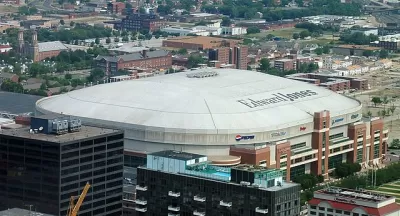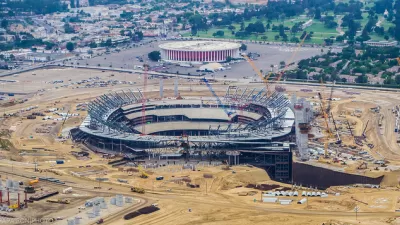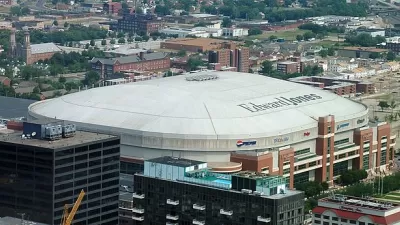The gift of the NFL keeps on giving in St. Louis. What one writer calls a "sad saga" seems far from over.

Ray Hartman writes that life after the NFL will have a legacy in the city of St. Louis. Hartman gets in a dig about the priorities of the public and its political representation that's worth repeating before listing details:
On both the legal and financial fronts, irritating details remain that admittedly are only important to people who care about public accountability and good government as much as they do about, say, football. OK, so my audience just shrank.
The ongoing details include court cases involving the St. Louis Regional Convention and Sports Complex Authority (RSA), the mystery of how much taxpayers will spend on those court cases, and a proposal to bring an MLS soccer franchise to the city (depending on how the NFL saga wraps up).
The irony is that the RSA—which took its marching orders from Gov. Jay Nixon and his “task force” of businessman Dave Peacock and attorney Bob Blitz—will continue to waste handsome sums of state, county, and city taxpayer money for the noble cause of preventing city taxpayers from having the right to keep agencies like the RSA from wasting taxpayer dollars (on corporate welfare for stadiums).
Hartman's coverage follows a pair of recent news stories revealing ongoing spending related to the riverfront stadium proposal intended to keep the Rams in St. Louis (the Rams now play in Los Angeles, in case you missed it).
Mike Faulk reported earlier in August that RSA documents show "$840,538 paid to a 'consulting service' and $137,230 spent on 'legal services' related to the riverfront stadium project since January." The NFL approved a plan for the Rams to move on January 12, rendering the riverfront stadium proposal obsolete, but not, apparently, the RSAs spending.
Jacob Kirn also reports on the RSA's ongoing stadium proposal spending. Among the facts included in that article: The RSA had already spent $16.2 million on the project before the Rams decided not to stick around.
FULL STORY: Lessons of the Lost Stadium

Study: Maui’s Plan to Convert Vacation Rentals to Long-Term Housing Could Cause Nearly $1 Billion Economic Loss
The plan would reduce visitor accommodation by 25,% resulting in 1,900 jobs lost.

North Texas Transit Leaders Tout Benefits of TOD for Growing Region
At a summit focused on transit-oriented development, policymakers discussed how North Texas’ expanded light rail system can serve as a tool for economic growth.

Why Should We Subsidize Public Transportation?
Many public transit agencies face financial stress due to rising costs, declining fare revenue, and declining subsidies. Transit advocates must provide a strong business case for increasing public transit funding.

How to Make US Trains Faster
Changes to boarding platforms and a switch to electric trains could improve U.S. passenger rail service without the added cost of high-speed rail.

Columbia’s Revitalized ‘Loop’ Is a Hub for Local Entrepreneurs
A focus on small businesses is helping a commercial corridor in Columbia, Missouri thrive.

Invasive Insect Threatens Minnesota’s Ash Forests
The Emerald Ash Borer is a rapidly spreading invasive pest threatening Minnesota’s ash trees, and homeowners are encouraged to plant diverse replacement species, avoid moving ash firewood, and monitor for signs of infestation.
Urban Design for Planners 1: Software Tools
This six-course series explores essential urban design concepts using open source software and equips planners with the tools they need to participate fully in the urban design process.
Planning for Universal Design
Learn the tools for implementing Universal Design in planning regulations.
City of Santa Clarita
Ascent Environmental
Institute for Housing and Urban Development Studies (IHS)
City of Grandview
Harvard GSD Executive Education
Toledo-Lucas County Plan Commissions
Salt Lake City
NYU Wagner Graduate School of Public Service





























